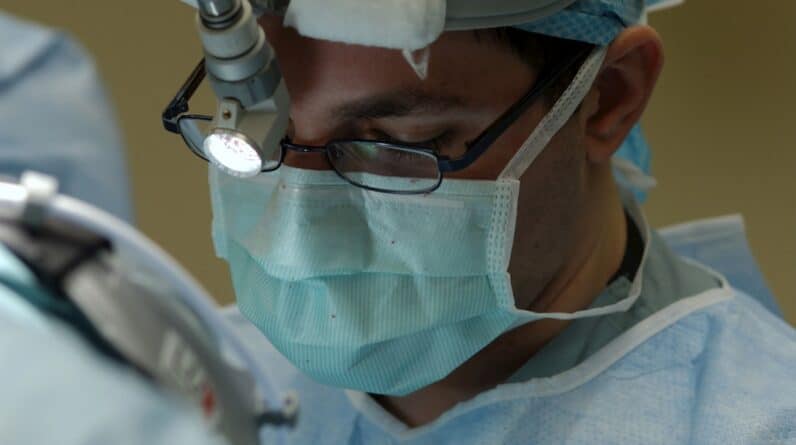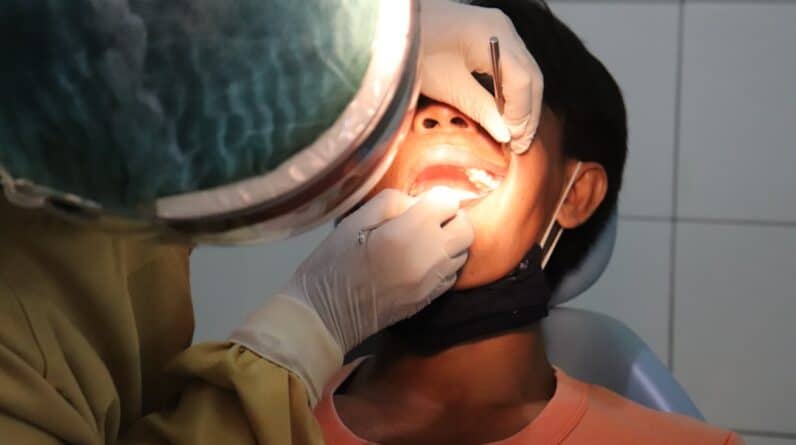When you consider vision correction, two of the most popular procedures that come to mind are LASIK and PRK. Both are laser eye surgeries designed to improve your eyesight by reshaping the cornea, the clear front part of your eye. LASIK, which stands for Laser-Assisted In Situ Keratomileusis, involves creating a thin flap in the cornea, allowing the surgeon to access the underlying tissue.
This flap is then replaced after the laser treatment, promoting a quicker recovery. On the other hand, PRK, or Photorefractive Keratectomy, does not involve creating a flap. Instead, the outer layer of the cornea is removed entirely before the laser reshapes the cornea.
This fundamental difference in technique leads to variations in recovery time and post-operative care. Understanding these procedures is crucial for making an informed decision about your eye health. Both LASIK and PRK aim to correct common vision issues such as nearsightedness, farsightedness, and astigmatism.
However, they cater to different needs and preferences. For instance, if you have a thinner cornea or other specific eye conditions, PRK might be a more suitable option for you. Familiarizing yourself with these procedures will empower you to engage in meaningful discussions with your eye care provider and help you choose the best path for your vision correction journey.
Key Takeaways
- Lasik and Prk are both popular laser eye surgery procedures that can correct vision problems such as nearsightedness, farsightedness, and astigmatism.
- The benefits of Lasik and Prk include improved vision without the need for glasses or contact lenses, quick recovery time, and long-lasting results.
- Risks and complications of Lasik and Prk may include dry eyes, glare, halos, and undercorrection or overcorrection of vision.
- Good candidates for Lasik and Prk are generally over 18 years old, have stable vision for at least a year, and have no underlying eye conditions.
- When choosing a Lasik and Prk provider in Frisco Texas, it’s important to consider their experience, technology, and patient satisfaction.
The Benefits of Lasik and Prk
The benefits of LASIK and PRK are numerous and can significantly enhance your quality of life. One of the most immediate advantages you may experience is the freedom from glasses or contact lenses. Imagine waking up in the morning and seeing clearly without fumbling for your eyewear.
This newfound clarity can lead to increased confidence and convenience in daily activities, from sports to reading. Additionally, both procedures have high success rates, with many patients achieving 20/25 vision or better after surgery. This level of improvement can be life-changing, allowing you to engage in activities that may have been challenging due to poor eyesight.
Another significant benefit is the speed of recovery associated with LASIK compared to PRK. Many LASIK patients notice an improvement in their vision within hours of the procedure, while PRK may take a few days for optimal results to manifest. However, PRK has its own set of advantages, particularly for those with thinner corneas or other anatomical considerations that make LASIK less suitable.
Both procedures are performed on an outpatient basis, meaning you can return home shortly after surgery, further adding to their appeal. Ultimately, whether you choose LASIK or PRK, you can expect a transformative experience that enhances your visual freedom.
The Risks and Complications of Lasik and Prk
While LASIK and PRK offer remarkable benefits, it is essential to be aware of the potential risks and complications associated with these procedures. As with any surgical intervention, there are inherent risks involved. Some common complications include dry eyes, glare, halos around lights, and fluctuating vision.
These side effects can be temporary or, in some cases, persist long-term. It’s crucial to discuss these risks with your eye care provider so that you can weigh them against the potential benefits. In rare instances, more severe complications can occur, such as infection or corneal scarring.
While these risks are minimal, understanding them allows you to make an informed decision about your eye health. Your surgeon will likely conduct a thorough evaluation of your eyes and medical history to minimize these risks before proceeding with either procedure. Being proactive about your eye health and following post-operative care instructions can significantly reduce the likelihood of complications.
Who is a Good Candidate for Lasik and Prk?
Determining whether you are a good candidate for LASIK or PRK involves several factors that your eye care provider will assess during your consultation. Generally speaking, ideal candidates are over 18 years old and have stable vision for at least a year prior to surgery. If you have significant refractive errors or specific eye conditions such as keratoconus or severe dry eye syndrome, your provider may recommend alternative treatments or further evaluations.
Your overall health also plays a crucial role in candidacy for these procedures. Conditions like autoimmune diseases or uncontrolled diabetes can affect healing and may disqualify you from undergoing LASIK or PRK. Additionally, if you are pregnant or nursing, it’s advisable to wait until your hormones stabilize before considering surgery.
By understanding these criteria, you can better prepare for your consultation and engage in an open dialogue with your eye care provider about your suitability for LASIK or PRK.
Choosing the Right Lasik and Prk Provider in Frisco Texas
Selecting the right provider for your LASIK or PRK procedure is a critical step in ensuring a successful outcome. In Frisco, Texas, you have access to various qualified ophthalmologists and clinics specializing in laser eye surgery. Start by researching their credentials and experience; look for board-certified surgeons who have performed thousands of procedures.
Reading patient reviews can also provide insight into their experiences and satisfaction levels. During your initial consultation, pay attention to how comfortable you feel with the provider. A good surgeon will take the time to explain the procedures thoroughly, answer all your questions, and address any concerns you may have.
They should also conduct comprehensive pre-operative assessments to determine which procedure is best suited for you. Trusting your surgeon is paramount; after all, they will be responsible for one of the most important decisions regarding your vision.
What to Expect During the Lasik and Prk Procedure
Understanding what to expect during the LASIK or PRK procedure can help alleviate any anxiety you may have about undergoing surgery. Both procedures typically take less than 30 minutes per eye and are performed on an outpatient basis. For LASIK, after numbing drops are applied to your eyes, the surgeon will create a flap in the cornea using a microkeratome or femtosecond laser.
Once the flap is lifted, the excimer laser reshapes the cornea according to your specific prescription. In contrast, during PRK, the outer layer of the cornea is removed entirely before reshaping it with the laser. This process may take slightly longer than LASIK due to the additional step involved in removing the epithelium.
Throughout both procedures, you will be awake but relaxed; many patients report feeling minimal discomfort during surgery. Your surgeon will guide you through each step, ensuring that you feel comfortable and informed throughout the process.
Post-Operative Care and Recovery for Lasik and Prk Patients
Post-operative care is crucial for ensuring optimal recovery after LASIK or PRK surgery. After LASIK, most patients experience minimal discomfort and can resume normal activities within a day or two. However, it’s essential to follow your surgeon’s instructions regarding eye drops and medications to promote healing and prevent infection.
You may also be advised to avoid strenuous activities or swimming for a short period. For PRK patients, recovery may take longer due to the removal of the outer corneal layer. You might experience more discomfort initially and will need to use prescribed medications diligently to manage pain and promote healing.
Your surgeon will schedule follow-up appointments to monitor your progress and ensure that your eyes are healing correctly. Adhering to these post-operative guidelines will significantly enhance your recovery experience.
Potential Side Effects and How to Manage Them
While most patients enjoy excellent results after LASIK or PRK, it’s essential to be aware of potential side effects that may arise during recovery. Common side effects include dry eyes, glare, halos around lights at night, and fluctuating vision during the initial healing phase. These symptoms can be bothersome but are often temporary as your eyes adjust post-surgery.
To manage these side effects effectively, it’s crucial to communicate openly with your eye care provider about any discomfort you experience. They may recommend artificial tears for dry eyes or specific medications to alleviate discomfort during recovery. Additionally, wearing sunglasses outdoors can help reduce glare and protect your eyes from UV rays while they heal.
By staying proactive about managing side effects, you can enhance your overall recovery experience.
Long-Term Results and Follow-Up Care for Lasik and Prk Patients
The long-term results of LASIK and PRK are generally positive; many patients enjoy improved vision for years following their procedures. However, it’s essential to understand that individual results may vary based on factors such as age, overall eye health, and adherence to post-operative care instructions. Regular follow-up appointments with your eye care provider will help monitor your vision over time and address any concerns that may arise.
During these follow-up visits, your provider will assess how well your eyes have healed and whether any adjustments are necessary. Some patients may experience changes in their vision as they age; therefore, ongoing care is vital for maintaining optimal eye health. By committing to regular check-ups and being proactive about any changes in your vision, you can ensure that you continue to enjoy the benefits of LASIK or PRK long into the future.
Comparing Lasik and Prk: Which Option is Right for You?
When deciding between LASIK and PRK, it’s essential to consider various factors that may influence your choice. If you prioritize quick recovery time and minimal discomfort post-surgery, LASIK might be more appealing due to its flap creation technique that allows for faster healing. However, if you have specific eye conditions such as thin corneas or prefer a procedure without creating a flap, PRK could be a better fit.
Ultimately, discussing your lifestyle needs and visual goals with your eye care provider will help clarify which option aligns best with your circumstances. They will evaluate your unique eye anatomy and medical history before recommending a tailored approach that suits you best. By engaging in this dialogue with your provider, you can make an informed decision that prioritizes both safety and effectiveness.
The Cost of Lasik and Prk in Frisco Texas and Financing Options
The cost of LASIK and PRK in Frisco, Texas can vary significantly based on several factors including the technology used during surgery and the experience of the surgeon performing it. On average, LASIK tends to be slightly more expensive than PRK due to its advanced technology and quicker recovery time; however, both procedures represent a worthwhile investment in your long-term vision health. Many clinics offer financing options or payment plans that can make these procedures more accessible for patients concerned about upfront costs.
Additionally, some insurance plans may cover part of the expenses associated with laser eye surgery; it’s advisable to check with your insurance provider regarding coverage options before proceeding with treatment. By exploring various financing avenues available in Frisco, you can find a solution that fits within your budget while still prioritizing quality care for your vision correction needs. In conclusion, understanding LASIK and PRK is essential for making informed decisions about your eye health journey.
By weighing the benefits against potential risks while considering candidacy criteria and post-operative care requirements, you can navigate this process confidently. Whether you choose LASIK or PRK ultimately depends on personal preferences and individual circumstances; however, both options offer remarkable opportunities for improved vision that can enhance your quality of life significantly.
FAQs
What is Lasik and PRK?
Lasik (Laser-Assisted In Situ Keratomileusis) and PRK (Photorefractive Keratectomy) are both types of laser eye surgery used to correct vision problems such as nearsightedness, farsightedness, and astigmatism.
How do Lasik and PRK differ?
Lasik involves creating a thin flap in the cornea, while PRK involves removing the outer layer of the cornea. Both procedures use a laser to reshape the cornea and correct vision.
Who is a good candidate for Lasik or PRK?
Good candidates for Lasik and PRK are generally over 18 years old, have stable vision for at least a year, and have no underlying eye conditions or health issues that could affect healing.
What are the potential risks and side effects of Lasik and PRK?
Potential risks and side effects of Lasik and PRK include dry eyes, glare, halos, undercorrections or overcorrections, and in rare cases, loss of vision.
Where can I find Lasik and PRK options in Frisco, Texas?
There are several eye care centers and ophthalmology practices in Frisco, Texas that offer Lasik and PRK options. It is recommended to research and consult with a qualified eye care professional to discuss the best options for your specific needs.






